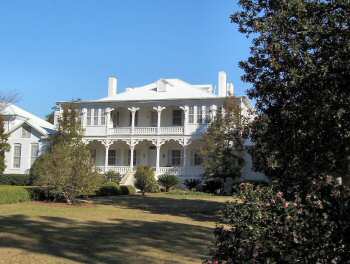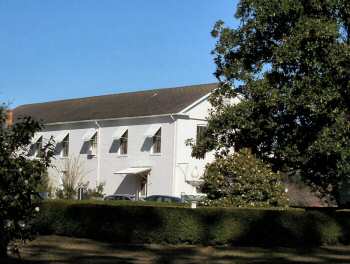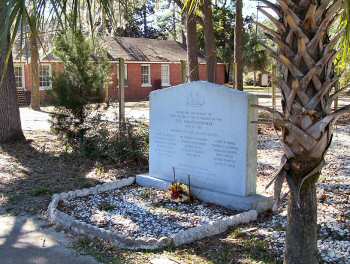 |
 |
|
|
This is one of the surviving structures of the Apalachicola Arsenal in Chattahoochee, Florida. It was the first Federal facility in Florida to fall to Confederate forces and was seized at gunpoint from its small garrison by a company of state militia in early January of 1861. The arsenal was constructed during the Second Seminole War and originally consisted of a number of buildings surrounding a 4 acre parade ground and connected by a 30-inch thick brick wall. The site is today on the grounds of the Florida State Hospital and many of the original buildings and the wall were demolished to make way for modern construction. This building was the original Officers' Quarters of the arsenal. It is now the Administration Building for the State Hospital |
This is another of the surviving structures of the arsenal. The facility took its name from the Apalachicola River and was located at the north end of that river in Chattahoochee, a picturesque city on the Florida-Georgia line. Because of its name, many historians have incorrectly placed the arsenal in Apalachicola, Florida, at the Gulf end of the river. The facility was used as a training camp and supply depot by the Confederates |
|
 |
||
|
Enlarge This is the monument to the men who died in the accidental explosion and sinking of the C.S.S. Chattahoochee, a gunship that operated on the Chattahoochee and Apalachicola Rivers. The Chattahoochee often docked at the arsenal wharf, which no longer exists. The ship sank following a boiler explosion near Blountstown, Florida. The men killed in the explosion were brought back upriver to Chattahoochee and were buried near the arsenal. The graves were found during a construction project some years back and are now marked by this monument. The Chattahoochee was raised by the Confederates and destroyed again, this time on purpose, at the end of the war. The remains of the ship can be seen today in the Port Columbus National Civil War Naval Museum in Columbus, Georgia |
|